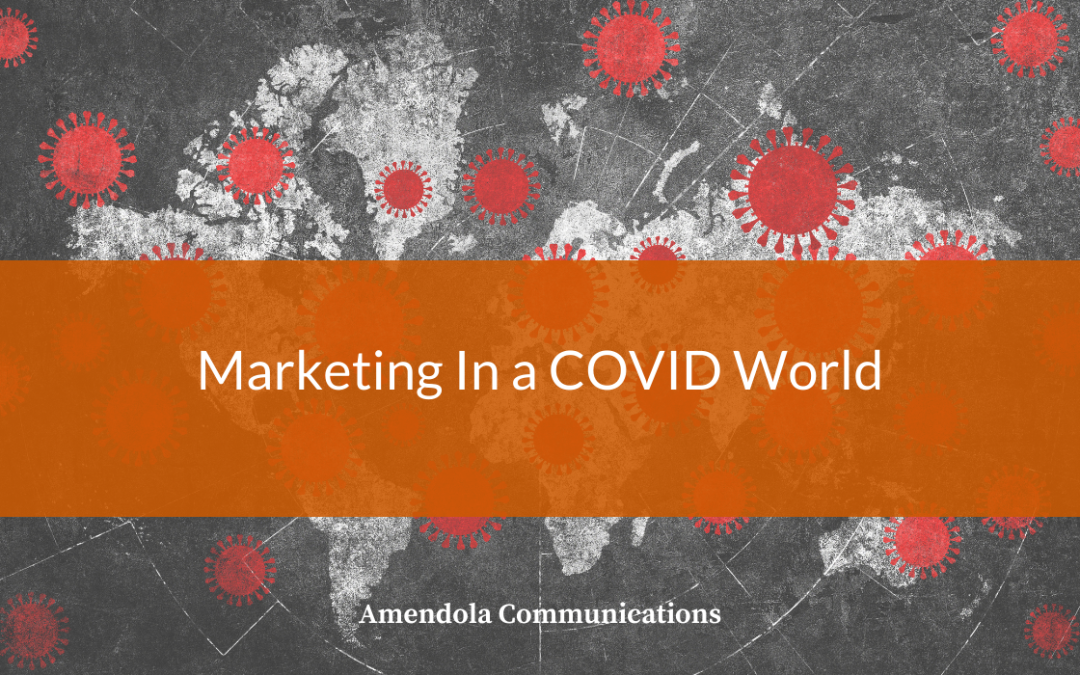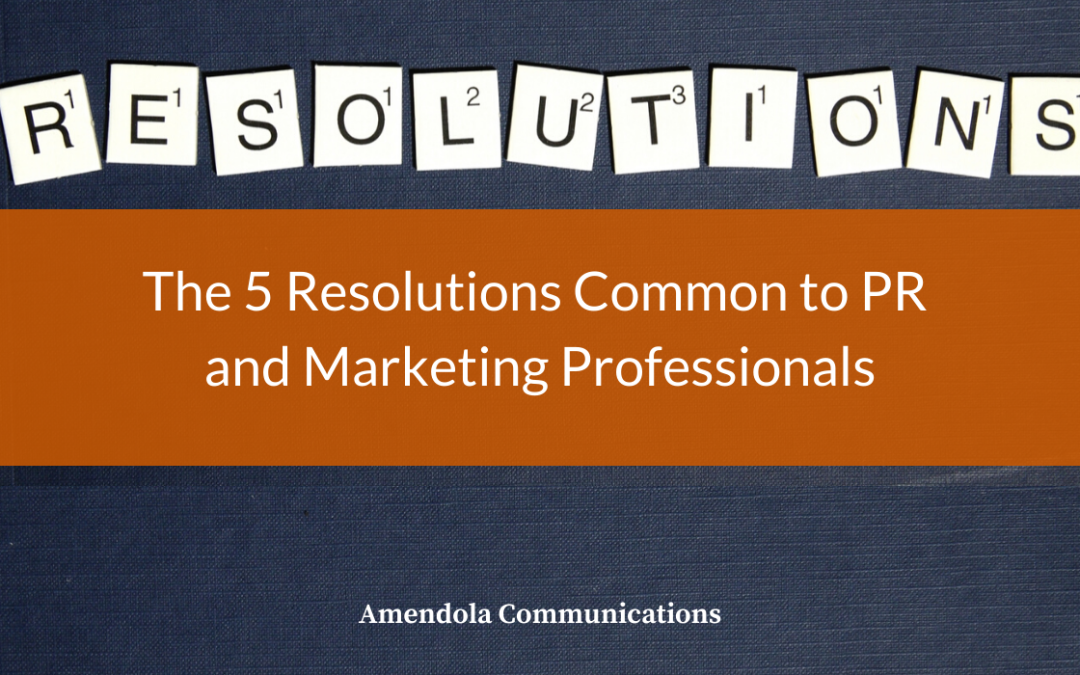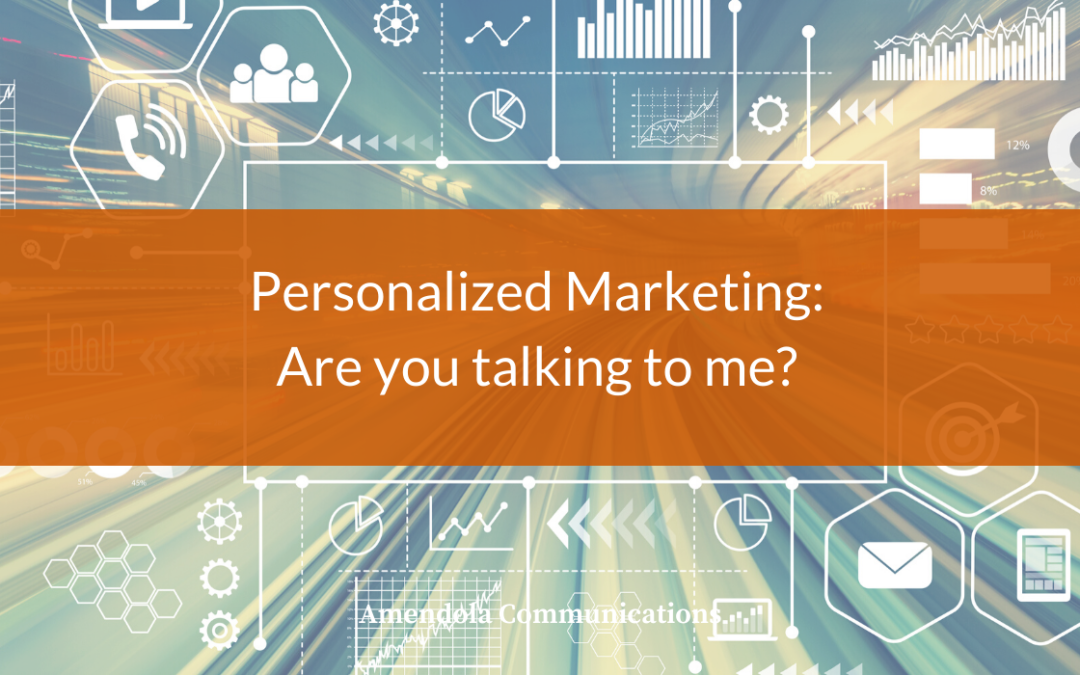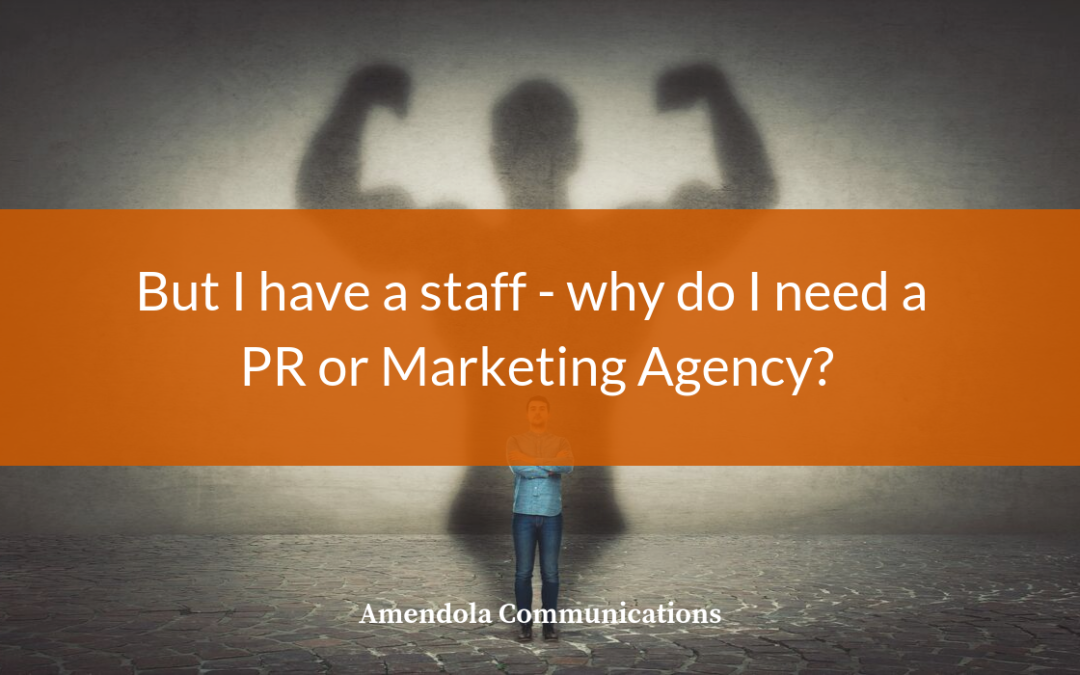
by Stacy State | Sep 9, 2020 | Blog
In mid-May we talked about the emergence of a new normal in public relations and marketing as a result of the COVID-19 pandemic. Media coverage of the virus has become all-consuming in the intervening four months.
Over 100 million pieces of news focused on COVID-19 have appeared. In just one sampled day, 340,000 came from 30,000 media outlets. As the lingering epicenter of the crisis, the United States produces one third of all global daily coverage.
Even as pandemic fatigue sets in among the American population, our collective obsession with the virus and its toll never wavers. Potential vaccines linger on the horizon bringing hope. However, even aggressive projections place their availability 5 to 6 months away. COVID-19 isn’t going anywhere anytime soon.
The brands and products that most easily resonate with Americans these days are those that fulfill critical needs, both physical and emotional. So, unless you’re selling hand sanitizer, outdoor entertainment, or any type of toilet paper, how do you keep your brand in front of your customers?
By making your brand feel critical.
The Five Things That Matter
Brand Messaging
Gone are the days of simple promotions. In today’s world the only messaging that stands out and feels genuine is that which tries to connect with people on a human level. The mixture of isolation, fear of the unknown, and an overwhelming sense of community and empathy has hot-wired most Americans to see the world differently in a very short amount of time. It has crystalized the things that matter and those that don’t. To matter, your messaging must account for this shift in thinking.
Social Media
The isolation of social distancing has caused 32% of Americans to spend more time on social media as a way to stay connected to their friends and family. Leveraging this groundswell of attention, paired with appropriate messaging, is the key to remaining relevant and to gaining new audiences. Make your brand into a trusted news source that offers important information during this time of need. Engage your followers in a conversation that proves valuable.
Virtual Events
Our need to connect with one another is fundamental. While physically isolated, virtual events have skyrocketed 1000% during the pandemic. These events are a collective backbone offering education, networking, and collaborative opportunities. It cannot be overstated how important these events are for socializing your brand’s presentations, white papers, and case studies. These webinars and virtual roundtables serve as important touchpoints with your existing customer base and essential engines generating new client leads.
Email Campaigns
Email remains another reliable and consistent communication vehicle. Since the beginning of the pandemic email open rates have improved 8% with a corresponding click-through increase of 22%. Incorporating the critical elements mentioned above into a comprehensive email campaign can help drive the success of your brand’s overall marketing strategy.
SEO & Lead Generation
The consistent theme here is Americans are turning to alternative tools to stay connected. Social media, virtual meetings, email, and the Internet have replaced most traditional in-person communication. Internet usage has surged 70%. A clever SEO & lead generation plan will plant the seeds that flourish long after COVID-19 has disappeared. Providing evergreen content that engages customers and answers core needs remains the heart of successful lead generation. Whitepapers, eBooks, and blog posts will always matter. And SEO drives their visibility.
The world has changed. People have changed. It’s impossible to know for how long. But for now, connecting with people requires embracing this new normal. The five keys listed here will help your brand lead as we all step into this brave new world.
by Stacy State | May 13, 2020 | Blog
Even saying it seems like an oxymoron it’s not exactly normal if it’s completely new. Truthfully, the new normal will be defined by the choices we make today and most importantly tomorrow.
While it’s been said many times, the present experience is
rather unprecedented. We can certainly learn from recent mistakes, but what we
choose to learn and how we choose to change will define the new normal.
But enough of the philosophy. If we focus on one specific topic that of public relations and marketing the question is how will these professionals be changing strategies, communications, and audience perceptions?
One thing that has certainly continued throughout the
COVID-19 pandemic is mass communication. As of April 16, there has already been
more than 38 million pieces of news focused on COVID-19 and 163,000 in just the
last day (that’s one day) across nearly 18,000 news outlets, with 44% of the
news coming from the United States.
That’s a LOT of news. And, as you would expect, reactions
from brands have varied from ultra conservative to very liberal.
Winners and losers
Before we get to the new normal, it’s important to discuss
who some of the winners and losers have been throughout the COVID-19 pandemic.
In general, the market and consumers are being forced to embrace a new way of
life that includes virtual meetings, online fitness, food delivery services,
and even telemedicine. At the same time, industries supporting travel, festivals
or conference entertainment, airlines, and hotels have seen a tremendous
decline in stockholder value.
Aside from general financial stability and economics, what’s even more important for public relations and marketing professionals is who are the winners and losers as it relates to communication impacts during the pandemic. Brands that have remained empathetic, relevant and considerate have faired better than their peers.
In an example, Virgin Airlines announced they were using aircraft to help ship healthcare supplies to providers in need. Meanwhile a competitor airline ran ads of their planes “social distancing” and being 6 feet apart.
Needless to say, the latter fell on deaf ears and came
across as insensitive as real people, family and friends were suffering with
COVID. In a similar tone-deaf scenario,
Corona beer (despite the unfortunate coincidence in their name), launched an
advertisement for their seltzer beers with the slogan: “Coming ashore soon.”
Obviously with the given crisis and the continued spread of
COVID, this advertisement while intended to be playful was ill-timed and came
across as insensitive.
Creating the new normal
While brands struggle to stay relevant, considerate and compassionate during times of a pandemic, one can’t stop to question when we can get back to normal, i.e., the way things were. The unfortunate answer is never.
We must start creating the new normal. As public relations
and marketing professionals, we realize things have changed. With the media
focused solely on the pandemic (and rightly so), many brands have shifted
communications online.
Social media has seen an abundance of activity in online
presence. The digital era can be a blessing or curse to brands depending on how
they engage with their online audience during this pandemic.
As of mid-April, we are just now reaching the peak of the
COVID pandemic in some cities across the U.S. In the throes of a pandemic
brands must be cautious to post social media that is timely, relevant and
considerate of the readers.
Promotional announcements and advertisements will not only
disengage the readers but may turn them away from your brand in the future. As
we move into later phases of the crisis and we see more recoveries and fewer
active cases, brands can reengage on social media in a more promotional manner
but will need to still consider the impact that COVID has had.
Digital marketing’s role
In addition, digital marketing is playing a significant role
during the pandemic. Some brands have decided to invest heavily in digital
marketing as that’s where most audiences are in today’s world.
Depending on the industry, some brands have seen a huge
interest through this channel which is delivering content and ads at lower
costs than during normal times. The key is in the message and communication.
Knowing when, where and how to communicate is critical.
Getting to non-COVID topics
And lastly, what most brands really want to know is when can I talk about something NOT related to COVID? Unfortunately, the answer is likely not for a while.
Does this mean you can’t connect to your audience or
consumers? No. In fact, you should be connecting with your consumers and being
there for future prospects. Now is the time to support current customers and
deliver hope to future consumers.
Build the foundation now
We started this blog by talking about the “new normal.”
Unfortunately, the best crisis communication plan could not have predicted nor
planned appropriately for COVID-19.
However, an attuned, savvy team of public relations and
marketing professionals can help you feel poised and ready to embrace whatever
the future may hold. The communication efforts and media sources used by
companies will forever be changed but the vision and mission of organizations remains
the same and will only grow stronger.
Take this time to build a solid foundation upon which to
blast your value propositions and mission once the world is ready to listen.

by Stacy State | Feb 19, 2020 | Blog
We are a few months into the new year and it’s that time when we begin to reevaluate the resolutions we originally set. Were we being overly optimistic? Are these goals still achievable? Do we restart again?
The New Year has always marked a great starting point for assessing the changes we want to make in our lives both personally and professionally. The personal goals seem to be easier to make while professional goals sometimes get shoved to the side.
With the fast-pace and pervasive changes that occur within public relations and marketing, it’s important that we as PR and marketing professionals set meaningful goals and track our success toward them throughout the year. In speaking with colleagues within this field, what are some of the common resolutions we set for ourselves?
1. Set a content strategy at the beginning of the year. Lofty, yes, I know. But as professionals responsible for content marketing and thought leadership, knowing what topics to focus on according to a set calendar greatly speeds the delivery and production of great thought leadership pieces, white papers, blogs, e-Books and many other content deliverables.
Aligning topics with the content calendars for relevant media publications is also critical to success. If you know a certain trade publication will focus on health for the month of February then aligning your content accordingly will not only make it easier for your teams to deliver. It will also make it more likely that it gets published so you can reap the rewards of utilizing the information in multiple outputs across multiple channels.
2. Use data to drive strategy. While marketing and communications was once a more ambiguous and subjective art form rather than a science, it is now becoming easier to track results of activities due to the introduction of technology. In fact, many companies now demand to see results such as the number of new leads, the click-thru rates, and share of voice.
And as PR and marketing professionals, we too should demand and want to see the results of our labor. Knowing what messaging works and why for which type of customer is key to delivering even better communications and campaigns moving forward. It benefits everyone when we “work smarter and not harder” and being informed about how our past activity has performed is an important step to achieving that.
3. Don’t make perfect the enemy of good. This quote, often attributed to the French writer, Voltaire, really resonates with many in the PR and marketing profession. As writers and creators of content and design, there is often a pride that comes with a beautifully written piece, a new innovative spin on an overly discussed topic or a flawless pictorial of a convoluted concept.
After all, these are the moments we live for the times we get to deliver into the world a masterpiece that shows our years of schooling and experience. It’s times like these though that we must remember Voltaire’s words of wisdom for it is easy to get caught up in trying to make perfect what is already seen as great by many.
4. Read more but don’t get lost. As great PR, media relations and marketing professionals it’s often in our nature (and part of the job) to learn what’s going on in the world around us. We want and need to know what our competitors said in the New York Times yesterday or what topic is trending with our consumers/buyers.
While the expectations and deliverables can pile on us quickly, it’s nearly impossible to do our jobs (or do them well) without taking time out to understand the market, read what consumers are saying and stay ahead of the next big news story or product development. The caution here is that while reading and being aware of the industries we serve is critical to success, it can also consume hours and hours without realizing the time that’s gone by.
5. Find the best local coffee (or tea). The markets and the news never stop from east coast to west coast or one country to the next so there is always something going on and someone awake to report on it. As marketers and PR professionals we often are early to rise and are rarely without a pile of stories or new strategies to deliver. Finding the best caffeinated beverage, therefore, is key.
If you’ll be consuming it daily (or multiple times a day), then the taste is critical, but the cost must be reasonable as well. We’re marketers, we’re media relations you can’t fool us. We can write great thought leadership for the best coffee in town. We can create amazing brand awareness and even help you generate new leads and customers. Yes, we’ll work in trade for great coffee or tea.

by Stacy State | Oct 30, 2019 | Blog
The competition for consumers’ time is more critical than ever as they continue to be bombarded with the “noise” of messaging and advertisements in nearly every facet of life. According to Forbes, the average person is exposed to 4,000 10,000 advertisements each day. Without a strong, compelling message your brand is likely to get overlooked regardless of how life-changing it may be.
Think of your typical day and the amount of noise you encounter whether that be from emails, online ads, social media, commercials, and so on. Likely you along with many of your buyers have started to block much of the unnecessary noise. Many now use DVRs to avoid commercials or have tightened privacy on their social media pages to avoid unwanted ads.
Due to the overwhelming number of messages each day, it is critical that brands start becoming more personalized in their approach. Personalized marketing is not going away any time soon in fact, it is one of the top marketing trends for 2020. Research shows that more than 63% of consumers are highly annoyed with the way brands interact with them and blast irrelevant information.
What’s a personalized message?
The idea of what makes something personalized has changed. A recent survey by Pure360 suggests brands still rely only on basic personalization. Many companies continue to take the lazy approach by simply substituting the consumer’s name into the salutation of an email, while others get overzealous and appear creepy.
We’ve all received those emails that address us by name but have no idea who we are or what we care about. Take, for instance, a male who receives an email, addressing them by name, that then continues to discuss problems during menstruation and how a new sanitary product could change their life. This not only makes the company appear lazy and uneducated but could also damage the brand while wasting both resources and money.
Research shows that 81% of consumers want brands to get to know them and know when to approach them and how. This goes beyond dropping in names, cities or titles to truly engaging with consumers. While this may seem daunting, many marketers have large databases that contain numerous data points across all consumer segments. Unfortunately, many do not take advantage of this data.
Making it personal
The best personalization efforts are when consumers see a brand’s content or messaging in a natural and timely manner. Using the buyer’s or consumer’s past history engagements paired with current activities is one of the best ways to engage an audience. Fortunately, marketers have tools and technology that make delivering dynamic content a reality.
Take for example the future purchasing recommendations that Amazon makes based on what the consumer has previously purchased or viewed. These personalizations are typically more helpful and appreciated. In addition, grocery stores will often send coupons based upon your recent purchases. Lastly, we’ve all been victim of perusing one site and then looking at our Facebook page and seeing ads invade our feed. Brands must be careful with retargeting ads and these type of personalizations, which is why having a clear understanding of the consumer’s history and current activities is critical.
On a good note, it doesn’t even have to be this hard. In 2014, as soda consumption was steadily declining, Coca-Cola came out with its “Share a Coke” campaign. This simple, but extremely effective campaign personalized bottles by printing first names on them Share a Coke with Bethany, Share a Coke with Jeremy, etc. The campaign appealed to consumers because they saw their own name on a big brand. The campaign helped the company grow sales for the first time in 10 years.
Time to get personal
So if you haven’t yet, you better start getting more personal with your buyers or your competitors will. Below are some key considerations for diving into personalized messaging.
- Segment your audience. Hopefully you have already done this but as you know not all of your consumers have the same needs nor do they have them at the same time. This is really step 1 before you can begin personalization.
- Create content that matters. Not all content is created equal. Consider implementing dynamic content where your buyer can see the right content at the right time.
- Give your business a face. Your company should have a human identity is it fun, professional, goofy? Your company must have an identity that buyers can connect with whether you’re selling B2C or B2B.
- Make better recommendations. Don’t recommend a vacuum cleaner to someone who just purchased hardwood floors. Know your audience and tell them about products or solutions that they actually could use and need.
- Test and measure. You won’t always guess right. Some campaigns will have double-digit conversions while others will fall flat. The good news is most technologies allow you to do A/B testing and will even determine the winner for you before you blast an entire segment with a poorly designed campaign.
There’s no better way to get started than to get started, monitor your results, repeat what works and ditch the rest. Trust me if you don’t do it, your consumers will start identifying and connecting with your competitors, who may already be delivering personalized marketing.

by Stacy State | Oct 2, 2019 | Blog
We all have strengths and whether we admit it or not, we all have weaknesses. For one, I can’t seem to make a grilled cheese sandwich without burning at least one side. Lucky for me, there are people that not only cook grilled cheese to perfection, but they’ve done so well they’ve opened entire businesses to support this one simple menu item.
Outsourcing we all do it, nearly every day. I, for one, often “outsource” my cooking whether it be to family members or to nearby restaurants.
According to Dictionary.com, outsourcing is a verb meaning to purchase (goods) or subcontract (services) from an outside supplier or source. Unfortunately, the word “outsourcing” often sparks a negative connotation. In reality, it’s simply working with others to provide goods or services to enable one to focus on their own strengths.
The Benefits of an Agency
In 2017, the entire outsourcing market was worth $89 billion and has only grown since with both large and small companies outsourcing various components of their business. Frequently, companies choose to outsource all or pieces of their marketing and public relations efforts.
Some reasons companies may choose a marketing and PR agency include:
- It can be difficult to find the best talent, at a reasonable price. Hiring an agency that specializes in your field can afford you multiple experts at a lower cost.
- Faster Turnaround. With domain knowledge and available tools, a team of experts can produce results faster.
- Tools and Technology. An agency has access to the latest marketing and public relations tools and technology required to execute flawless campaigns with robust reporting.
- Staying Focused. This is especially true of smaller companies or high-growth companies. If information technology is your specialty, let your teams focus on internal development and support while outsourcing tasks that supplement your company objectives while allowing your team to stay focused on their initiatives.
- Last, but not least it is often more financially viable to outsource all or pieces of marketing and public relations rather than staff an entire team. Depending on a company’s size and growth trajectory, an internal marketing and PR team may consist of 1-2 or as many as 20+ internal employees.
Leaders must remember that it’s not an “all or nothing” scenario. If you have internal teams to handle most of the marketing and PR efforts, but you need the other 20%-40% managed externally, most agencies can fit your specific needs into a customized plan.
How to Decide
Even as a highly regarded marketing and public relations agency, we recognize that outsourcing these critical business needs is not for everyone. In a recent Forbes article, Jodi Amendola of Amendola Communications discusses the four criteria and questions to ask before choosing an “outsourced” marketing and PR agency.
The four most important questions include:
- Do you have clearly defined goals that you want your agency to achieve?
- Do you have someone that can act as your corporate liaison?
- Is your company’s culture accepting of new ideas and concepts?
- Are you okay with not being completely in control?
The last two are of particular importance. Whether you have an internal marketing staff already or will be relying solely on an agency, the culture of the company and willingness to accept an outside agency as part of your team is the key to success. The more you accept an agency as part of your team the easier it is for your employees and the agency to align with the business objectives and achieve goals.
In the most successful relationships, companies perceive their marketing and PR firms as an extension of their own teams. As with the existing marketing associates, agencies must also be held accountable for achieving defined goals and measured on their successes.
In summary, every company has its strengths and weaknesses. Josh Kaufmann, a famous business and entrepreneurship author, once said, “For everything we don’t like to do, there’s someone out there who’s really good, wants to do it and will enjoy it.” If you can find one of those, you’re ahead of the game.



